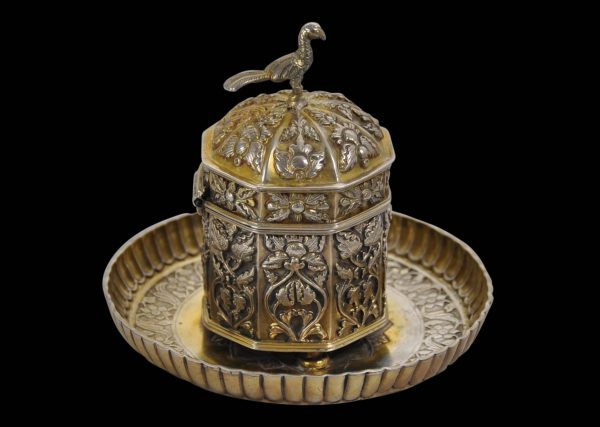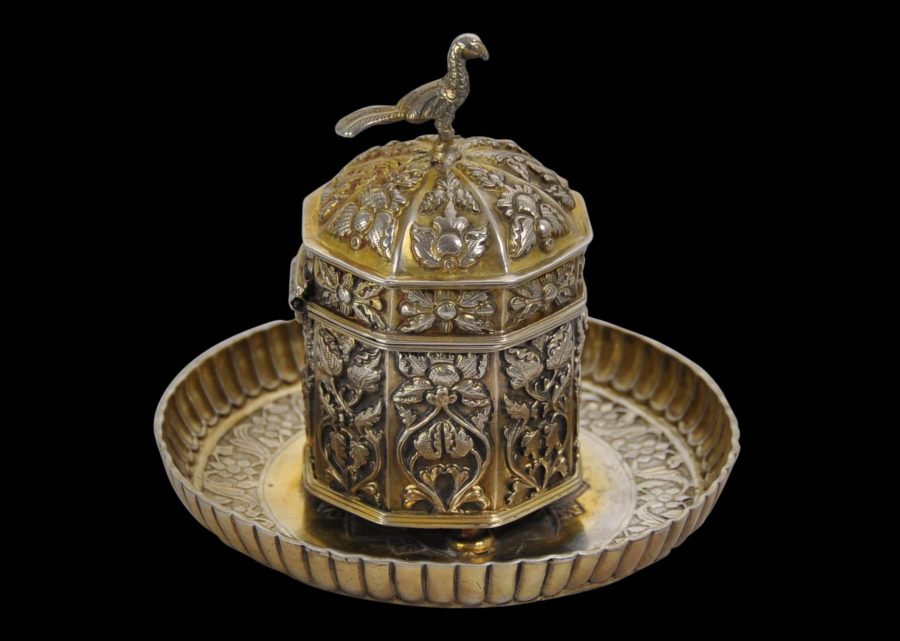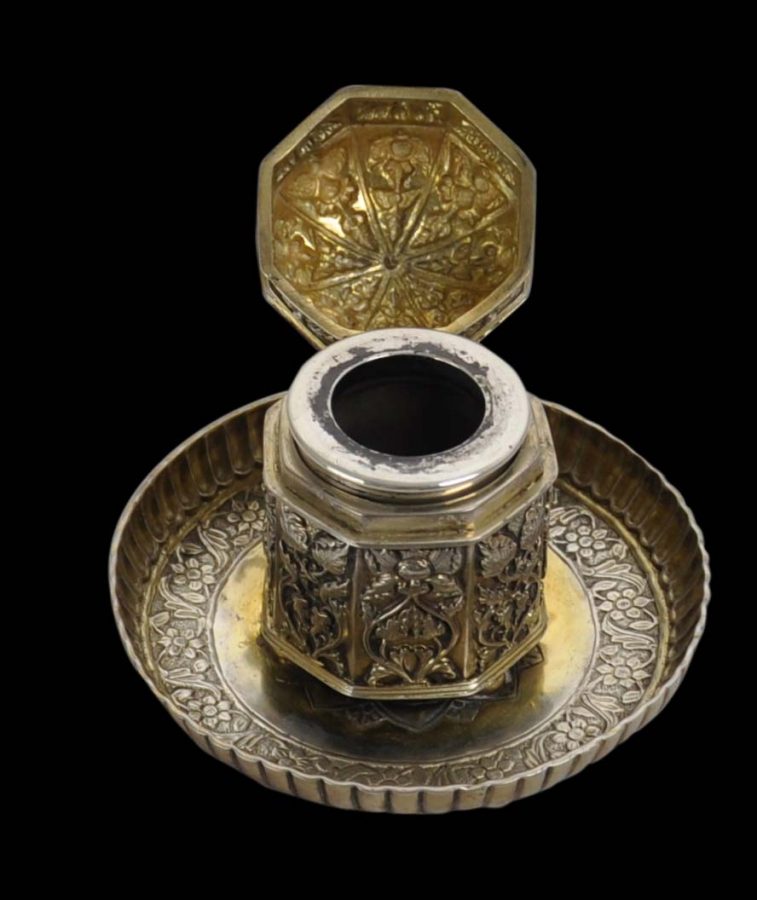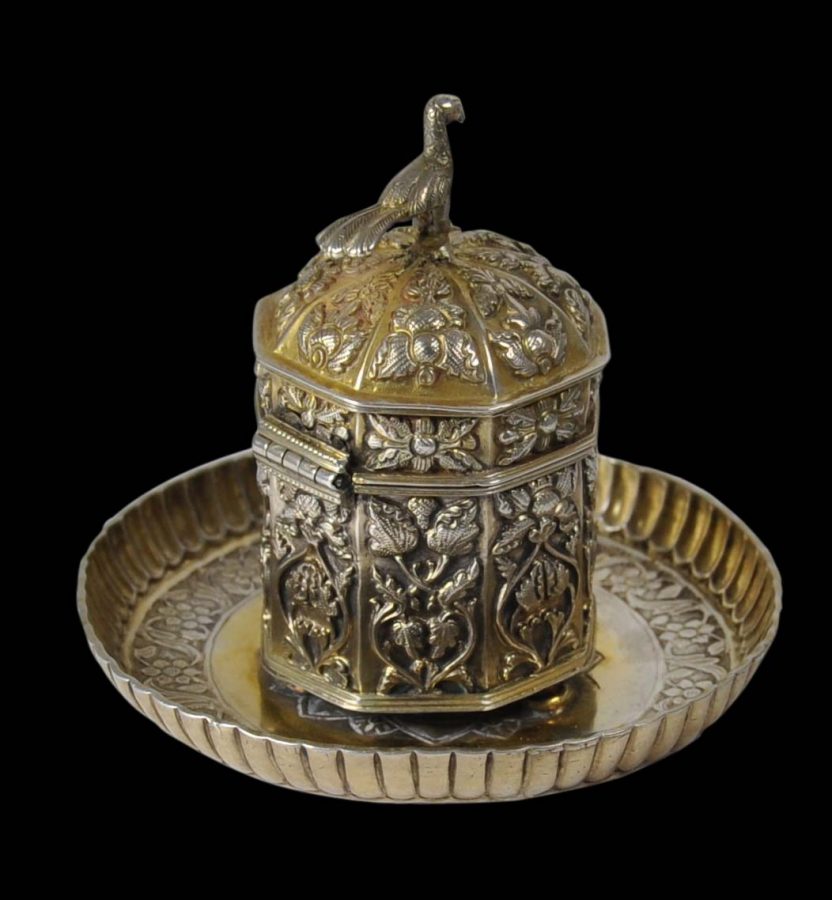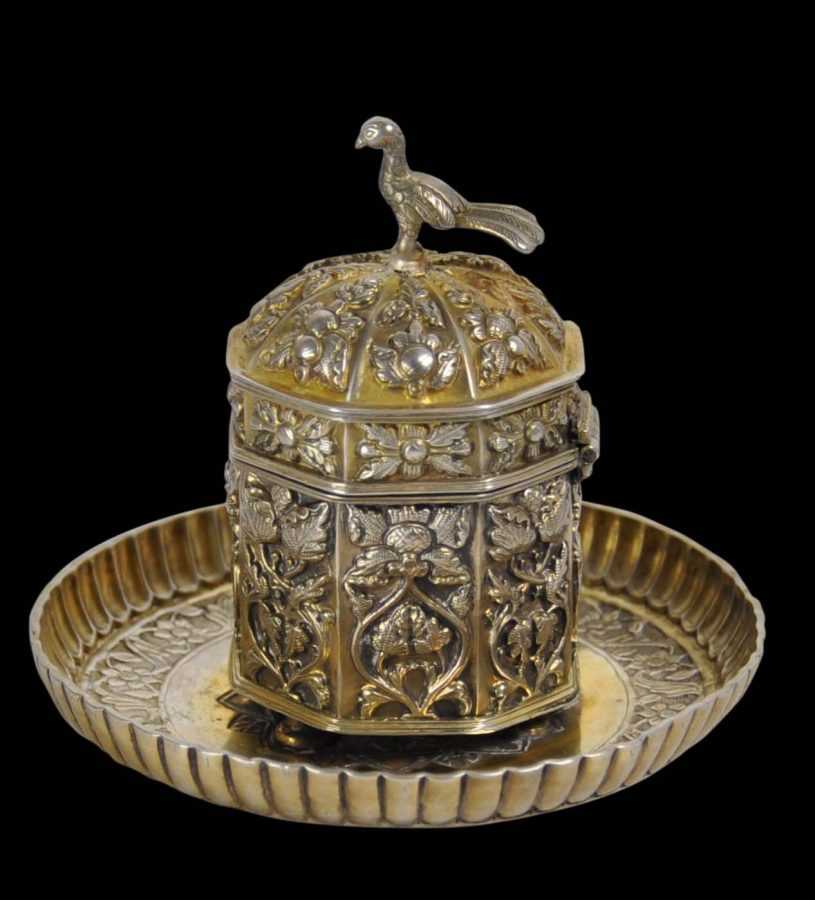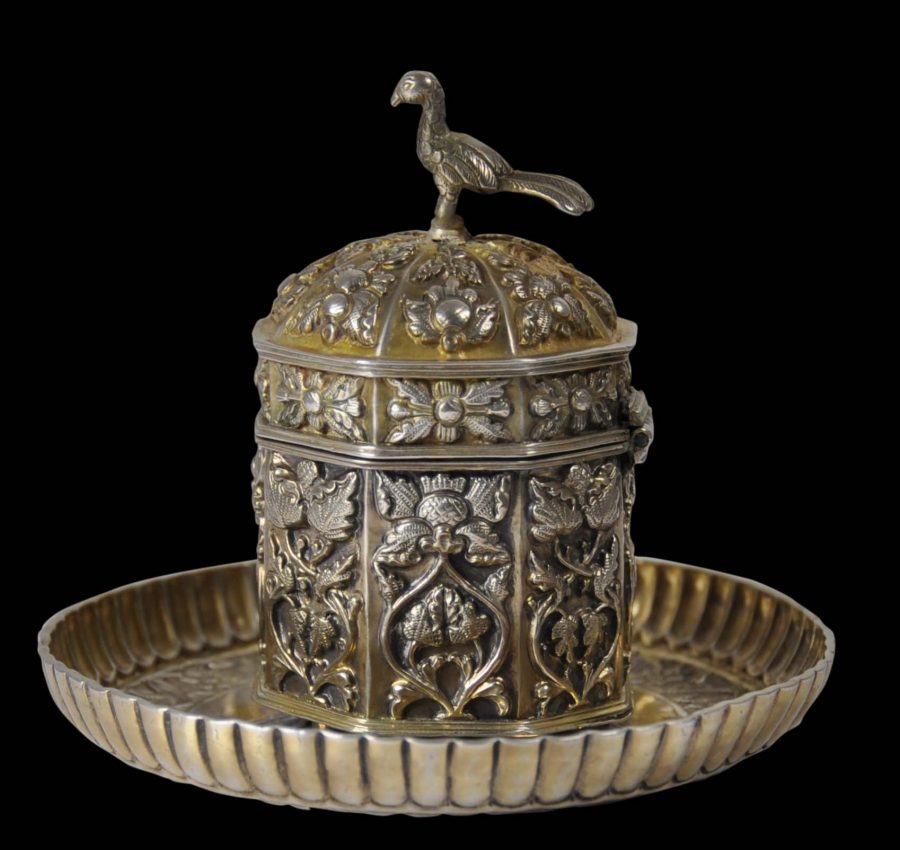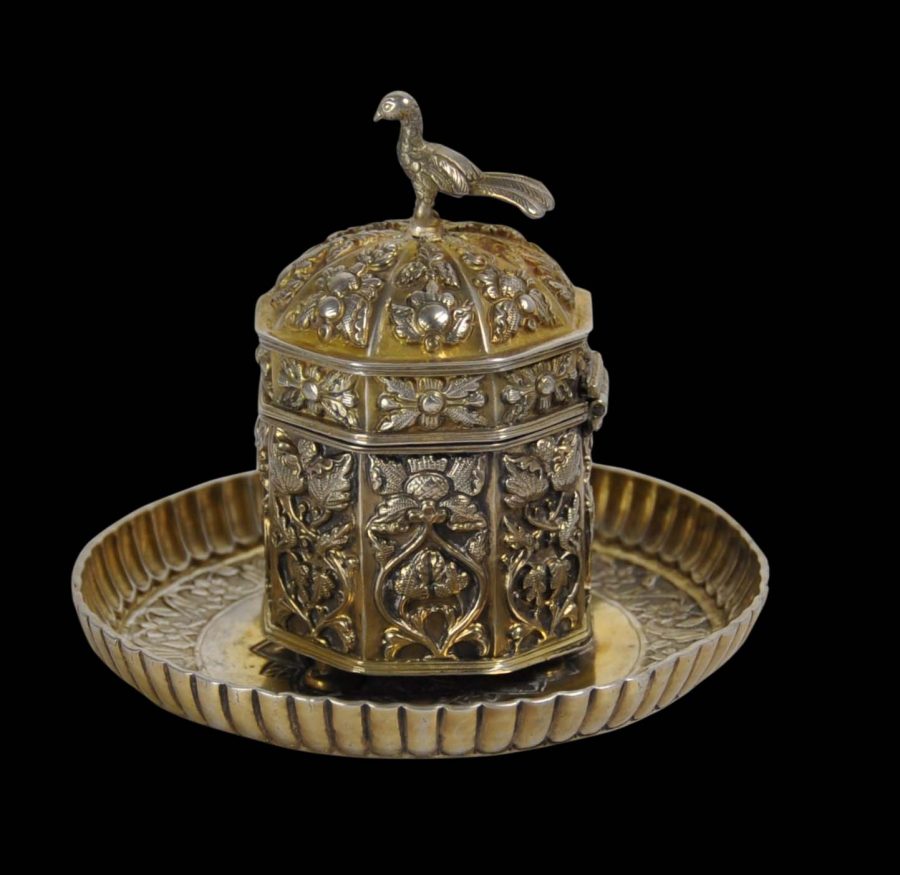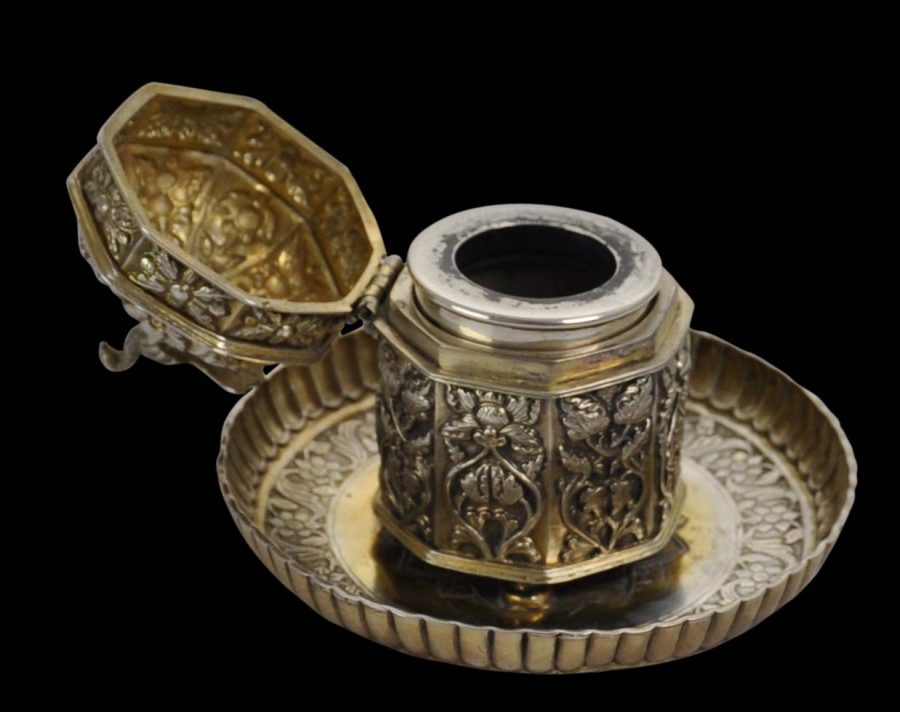This very interesting ink stand comprises a small dish onto which an eight-sided box with a hinged, domed lid has been fixed. A silver-rimmed, glass ink pot sits inside.
The box is very well chased in high-relief on each of its eight sides and cover with 17th-18th century European-style floral scrollwork. The work is reminiscent of that done by colonial silversmiths for the colonial Dutch market in Batavia in the Dutch East Indies in the 17th and 18th centuries.
The manner of the chasing is very similar to an unusual silver-gilt tankard in a private South Australian collection believed to have been made in Madras and with a presentation inscription to Lord Cornwallis, Governor General of India 1786-1793. (See Bennett & Kelty, 2014, p. 262 for an illustration.)
It is likely that this piece is by the same maker as the tankard.
The lid of cover is surmounted by a solid cast bird which appears to be resting on the top of the inkwell. The form of the bird is identical to other items of Indian-made silver destined for colonial users in the 18th century. See for example a similar bird atop a Goa stone box made in India in the 17th-18th century and illustrated in Cattaneo (2009, p. 206).
The dish has petal-gadrooned sides and inside there is a finely chased border of leaves and flowers. It is a small thali dish of a type that would have been used at palace banquets to hold chutneys and other such meal accompaniments. The inkwell has been attached to the dish and the lot has been gilded. It seems the maker of the well repurposed the dish, with the gilding suggesting that the two elements came together at the time of manufacture, rather than later. This was at the earliest time of colonial silversmithing in India, so it is not surprising that such a pragmatic use should have been made of the ‘native’ dish.
There are no assay or maker’s marks. The ink stand is in fine condition. There are no losses or repairs and the glass insert is free of any chips or other damage.
References
Bennett, J., & R. Kelty, Treasure Ships: Art in the Age of Spices, Art Gallery of South Australia, 2014.
Cattaneo, A., et al, Portugal and the World: In the 16th and 17th Centuries, Museu Nacional de Arte Antiga, Lisbon, 2009.


